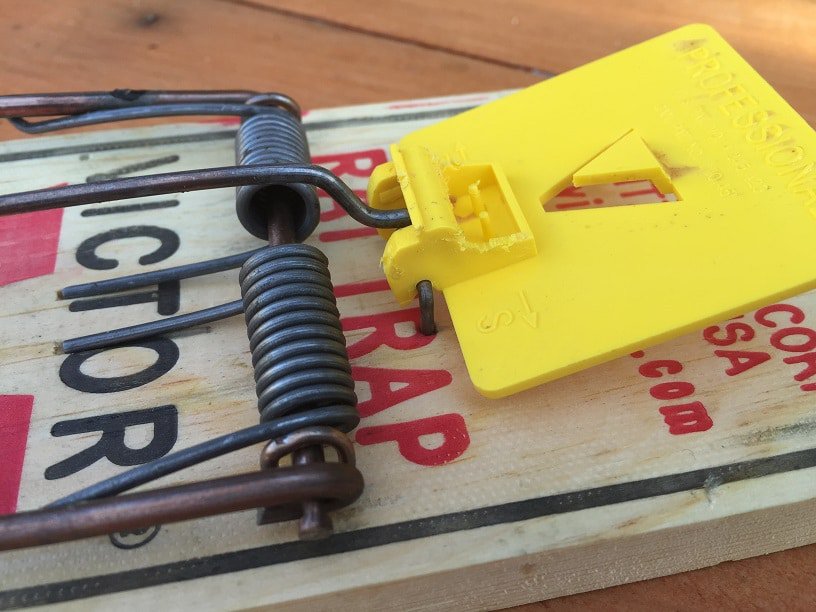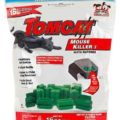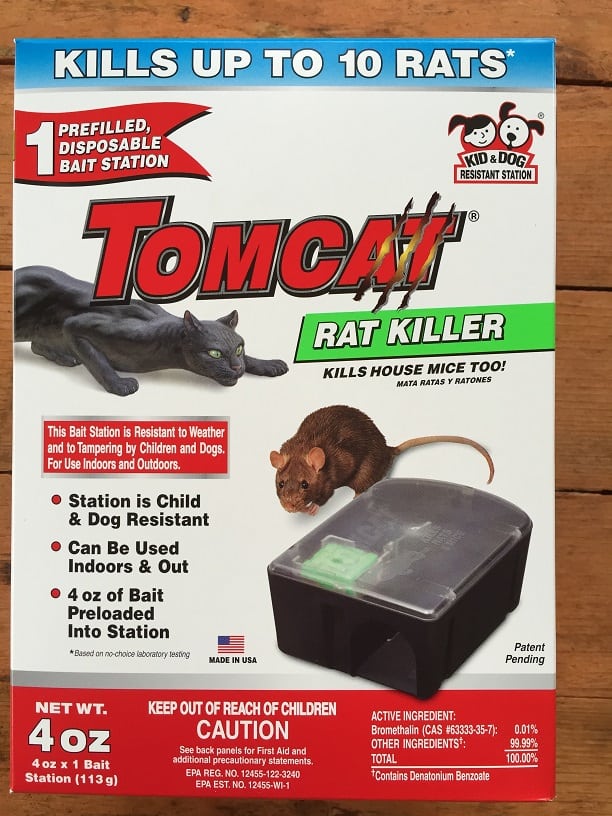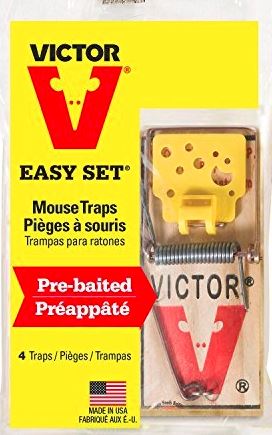Table of Contents
If you have rats in your house, then you need to act fast to keep the problem from getting worse. Those rats will keep chewing, destroying, multiplying, and pooping until you get serious about killing the vermin.
When it comes to getting rid of rats FAST, the best way is the use of traps. Lots and lots of traps. Let’s look at some trapping options to consider and see how to use them effectively.

Types of Rat Traps
So what can you use to kill rats instantly? Old-fashion snap traps or the more modern electric methods are the way to go. This article explains the pros and cons of each style in detail. Live rat traps are also a reliable option.
Snap Traps
When it comes down to it, sometimes, the original method is the best. When appropriately used, snap traps break the rat’s neck and spine in under a second. An immediate death means the rat doesn’t suffer.
There are multiple types of snap traps, and caution should be used when placing them. When laying the traps, you do not want your finger to become a victim to the trap. Here is a look at a traditional rat snap trap from Victor.
One style of snap trap is the easy set trap. Easy set traps take some of the danger away by taking less effort to set. In some cases, it is just a simple push. Specific brands have altered the snap not to be as powerful – to avoid unintentional injuries to yourself – but they still have enough force to kill the rats.
Here is a look at an easy set trap from Tomcat.
You can set as many snap traps as needed around your area. If you are dealing with a sizable number of rats, this method can be very efficient But be aware when placing that pets or children may accidentally set off these traps and never put in a location where this could happen.
Electric Rat Traps
Electric rat traps work well when you are dealing with just a few rats. After baiting the trap and setting it out, the rat will approach and complete the electronic circuit when it enters. The shock surges through the body, killing the rat instantly.
The disposal of rats with these types of traps is simple. You release the door and dump the body of the rat into the trash. It removes you from the situation and requires no physical engagement with the rat. These traps can be reset and used again.
You will also want to avoid using electric rat traps around children or pets.
Live Rat Traps
Live traps like cage traps or bucket traps are used to capture a variety of animals and are safe for use around children. Look for a live trap specific for small rodents and place some bait inside. No harm comes to the creature that enters, so this is highly recommended for people with pets because it is a pet-safe rat trap.
Once you’ve captured the rat, you will still need to dispose of it. You can reach out to a local animal group for assistance or release it into the wild. If releasing live rats, remember to keep a reasonable distance from any buildings, as you don’t want to give someone else the same problem.
Live traps capture one rat at a time and require resetting. If you have a large number of rats, this technique may not produce quick results. However, if you only have a few rats you are trying to take care of, this method may work well for you.
What NOT to Do
If you are looking to solve your rat problems promptly, there are some methods not recommended that include:
- Trapping rats in a bucket of water
- Using glue boards
These techniques are common, but are incredibly inhumane and can take a long time. For the fastest methods, stick with the ones explained above.
Keep in mind that rats and mice are very different. Using a mousetrap to deal with a rat situation will only leave you with an aggravated rat. Make sure the tools you are using are correct for the problem’s conditions.
How long does a rat poison work? The use of rat poison is also effective at getting rid of rats, but it often takes a few days to work. If you are looking to take care of this problem as fast as possible, stick with trapping.
Bait
You have your traps ready, but how do you attract the rat? The best bait to use with traps is peanut butter.
Peanut butter is cheap and easily accessible; you may even have some at home now. It has a strong scent that draws the rats and makes it simple for them to locate your traps. Peanut butter is also sticky, so the rats take time to eat it and can’t swipe it off the trap as you have seen in cartoons.
Fruits, vegetables, cereal, and meat are other bait alternatives for rats. But peanut butter has a longer “shelf-life” than the others so that you won’t have any rotting food. Though with these quick methods, your rat problems will soon be over.
Prevention
Once you have cleared the area and all unwanted guests have left, it is important to prevent rats from returning. Rats have a great memory and use mazes and tunnels they create in the wild. If you are not careful, they can end back at your home. Some tips to keep rats away:
- Keep food stored in air-tight containers and counters clean
- Store pet food in sealed containers – preferably off the floor
- Block any cracks or holes in the house – chicken wire works great
- Stay on top of lawn work – trimmed vegetation leaves no room for rats to hide
- Mint plants are thought to deter rodents
- Use plastic snakes and owls as decoration – rats’ natural predators
Conclusion
There are multiple solutions to a rat problem needing a quick remedy. At Rat Relief Headquarters, we remind our clients to use methods that only promote humane, instantaneous death. Depending on the type of trap you use, snap trap, electronic, or live, you will be able to address the rat situation and come out on top. Bait with peanut butter for rapid success and take steps to prevent any further rodent scenarios.




